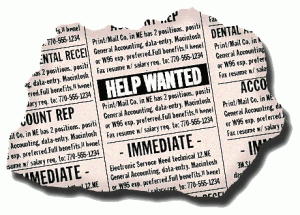Archive for Oktober 2016
posted by Maulidya Sunarya's Blog
posted by Maulidya Sunarya's Blog
1. Public Service Ads : Public service ads are ads created to convey social messages to the public
Example :
2. Classified Ads : Is a development from earlier ones advertisements in newspapers appears with featuring appeal of the image is interesting and the words that are used only as needed.
Example :

3. Ads Announcement : Ad announcement, is a form of advertising that seeks to declare, deliver or give a message to the general public. Ads like this could be in the form of writing as in posters, billboards, banners, or in the form of advertising that we often encounter on television, radio, internet or other media.
Example :

4. Commercial Advertising : Commercial ads are ads that introduce, offer and promoting the products of the company to the general public and persuade them to use the products that are advertised. Of course these ads processed through the media, and most of us see ads on the television or radio.
Example :
posted by Maulidya Sunarya's Blog
ADVERTISING
"Advertising is all forms of non personal presentation, promotional ideas, promotion of goods or services performed by the sponsor who paid" - Philip Kotler 2005
"Advertising is all forms of nature nonpersonal presentation and promotion of ideas, the promotion of goods or services paid for by sponsors" - Djaslim Saladin 2007
"Print media advertising is a medium that is static and prioritizes messages visual message" - Rhenald Kasali
"Advertising is promotional items such as goods, services, places of business or idea that should be paid by sponsor. In the world of marketing management, advertising is one of the global promotional strategy or overal" Wikipedia
"Advertising is a form of communication is non-personal selling messages persuasively clear of sponsors in order to inffluence people to buy the product by paying a fee for the media being used" Kriyantono - 2008
ADVERTISMENT
"Advertisment is one kind of mass comunication technique with pay room or time to broadcast information about the goods and services offered by the advertiser" Suhandang - 2005
"Advertisment is persuasive communication media that is designed to generate a response and help to achieve objectivity or marketing purpose." Gilson and Brekman - 1980
"Advertisment is a communication process that has a very important force as a marketing tool that is very helpful in selling goods. providing services and ideas through certain channels in the form of persuasive information." Wright - 1978
"Advertisment is a message that offers a product that is addressed to the public through the media" - Rhenald Kasali - 1992
"Advertisment is a communication of commercial and non-personal about an organization and its products are transmitted to the masses with the target through a medium that is mass such as television, radio, news papper, magazines, direct mail(post direct), billboards outdoor space, or vechile general" Lee - 2004





